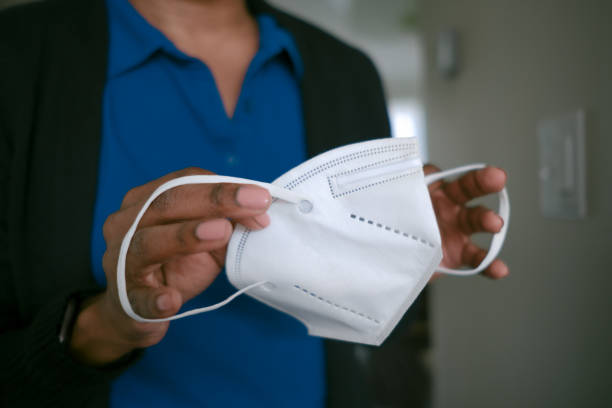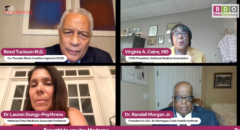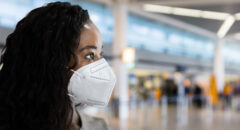
Is the unmasking of America at hand?
The U.S. Centers for Disease Control and Prevention announced Friday that most Americans can now shed their face coverings in indoor public settings because the agency has changed how it measures the threat of coronavirus in local communities.
Until now, COVID-19 case counts have been the primary metric used to determine whether mask-wearing was recommended in a community. That meant that roughly 95% of U.S. counties fell into the "mask up" category.
Inside the new guidelines
But the new guidelines also weigh hospitalizations and local hospital capacity, which have improved greatly since the Omicron variant first surfaced in the United States last December. The highly contagious variant has been less severe than earlier versions of the virus, particularly for people who are fully vaccinated and boosted.
Under the new recommendations, more than 70% of Americans now live in areas where masking in public indoor settings is no longer advised, according to the CDC.
Americans also now have a special CDC website where they can find out on their own whether mask-wearing is still recommended in their counties.
"Our new framework was rigorously evaluated, both with current data and retrospectively during the Alpha, Delta and Omicron waves, and these new metrics have demonstrative predictive capacity for weeks into the future," CDC Director Dr. Rochelle Walensky said during an afternoon media briefing on the new COVID calculations.
"This new framework will provide the best way for us to judge what level of preventive measures may be needed in our communities," she added. "If or when new variants emerge or the virus surges, we have more ways to control the virus and protect ourselves and our communities than ever before."
Determining a community's COVID level
"A community's COVID-19 level is determined by a combination of three pieces of information -- new hospitalizations for COVID-19, current hospital beds occupied by COVID-19 patients or hospital capacity, and new COVID-19 cases," Greta Massetti, from the CDC's COVID-19 Response Incident Management Team, explained during the media briefing. "These metrics will tell us if the level is low, medium or high."
Masking in public indoor settings is only advised in communities where COVID levels are high; in medium-level communities, high-risk people are advised to talk with their doctor about whether to wear a mask in public indoor settings. No masking is recommended in low-level community settings.
"With this update, CDC will now only recommend universal school masking in communities at the high level," Massetti noted.
"As of today, more than half of counties representing about 70% of Americans are in areas with low or medium COVID-19 community levels," she said. "This is an increase from about one-third of counties at low or medium community levels last week, and we continue to see indicators improve in many communities."
RELATED: 3 Things to Consider With Mask Mandates Lifting
The federal change comes as nearly all U.S. states are already letting local mask mandates lapse. Some have eliminated the mandates entirely, while others have kept mask-wearing requirements in place for schools and medical facilities, the Associated Press reports.
Meanwhile, many companies have already shifted to requiring only proof of vaccination for workers, but masks are still mandatory while using public transportation, including flying on airplanes, according to The New York Times. Those rules are set to expire on March 18, but a flight attendants' union is urging the Biden administration to extend the requirement until more Americans are vaccinated.
Recent polls have demonstrated that the public's patience with COVID restrictions is fraying. Nearly half of Americans surveyed thought the nation should "learn to live with" the pandemic and "get back to normal," according to a Yahoo News/YouGov survey. And a poll from Monmouth University found that roughly 70 percent of Americans believe "it's time we accept COVID is here to stay and we just need to get on with our lives."
Whether or not you decide to wear a mask, remember to be cognizant of your surroundings and continue to use safe practices. This includes social distancing and washing your hands regularly.








